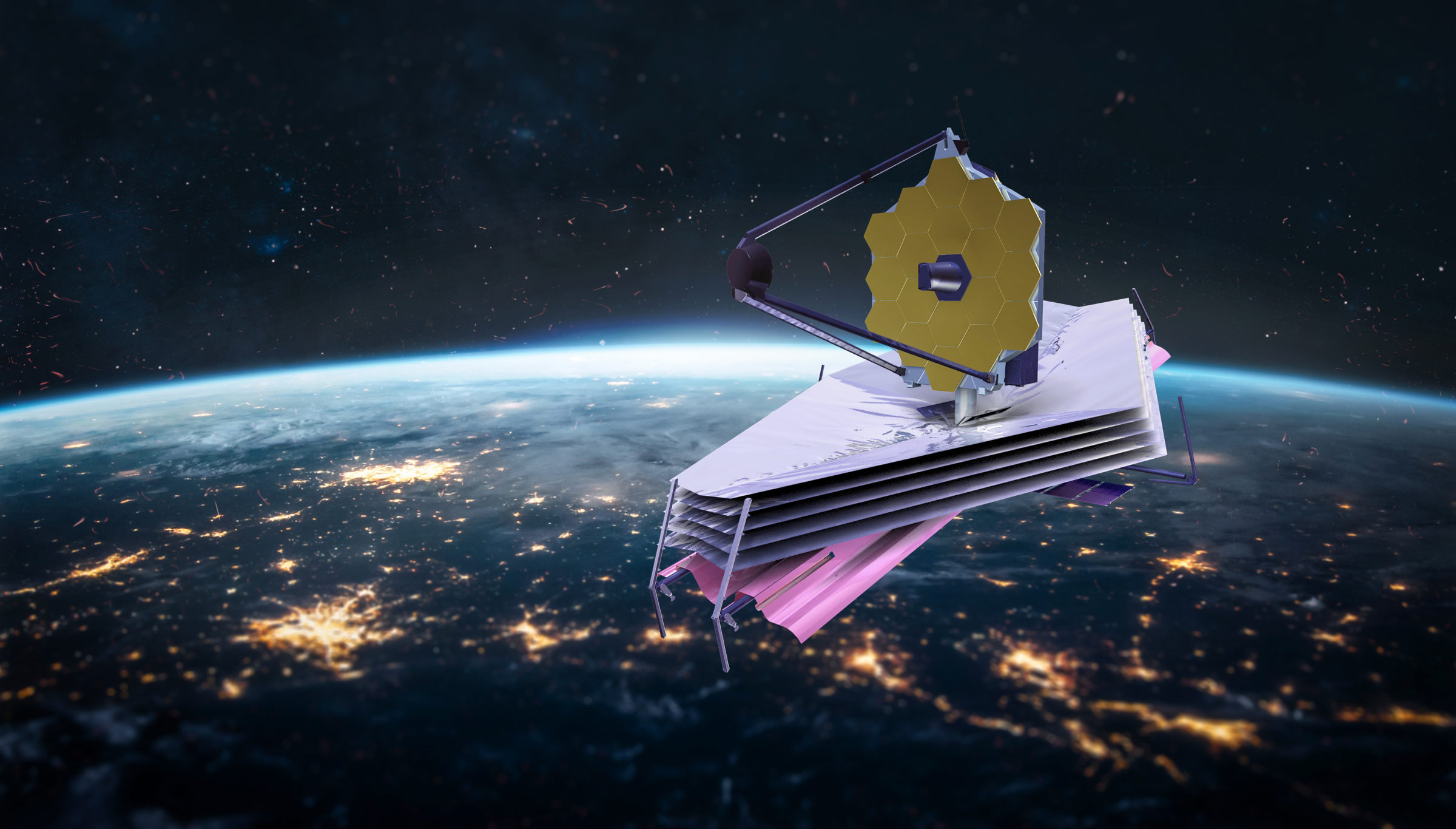Theories about the origin of the universe inevitably raise profound questions.
So when science writer and independent physics researcher Eric Lerner reported that NASA’s new James Webb Space Telescope (JWST) had collected images disproving the widely-accepted Big Bang theory, the ensuing media excitement was perhaps understandable.
Writing in a journal published by the British Institute of Art and Ideas, Lerner reported that NASA’s new telescope detected galaxies that are older and more numerous than astronomers expected. He then argued that this discovery supported his decades-old claim that “the Big Bang never happened” and also that astronomers are “panicking” about this.
Though many media outlets picked up the story, astronomers aren’t actually worried and for good reason.
The Big Bang affirms that the universe began a finite time ago and then expanded from a state of near-infinite density and temperature. The first evidence for this came in the 1910s and ’20s. Astronomers discovered that light from distant galaxies was stretched out or “red-shifted” as if the galaxies were moving away from us. Just as sound waves from a receding police siren stretch out and drop in pitch, light waves from a receding object in the night sky stretch out and look redder upon analysis than they would otherwise look.
In the 1920s, astronomer Edwin Hubble discovered that light from distant galaxies exhibits more red-shift than light from nearby galaxies. That implied galaxies farther away from Earth were receding faster than those close at hand, as if the universe were expanding like a balloon from an explosive beginning — a “big bang.”
Astronomers have since made numerous measurements confirming this expansion. And that’s where the James Webb telescope comes in.
The JWST can observe galaxies farther away than any detected before. Since light takes time to travel, light from extremely distant galaxies will reveal how those galaxies looked long ago. NASA’s new telescope can detect light from some galaxies as old as 13.6 billion years, or 200 million years after the Big Bang.
Moreover, if the universe is expanding from a Big Bang, light from the most distant galaxies should be extremely stretched out or “uber” red shifted. Astronomers calculate that such light would fall outside the visible spectrum and into the longer wavelength infrared range.
But detecting long wavelength infrared radiation requires special equipment — thus, NASA’s decision to build a telescope, the James Webb, capable of detecting such radiation.
What does this have to do with cosmic origins?
If the JWST were to detect “uber” red shifted radiation coming from extremely ancient, distant galaxies, that would provide additional confirmation that the universe has expanded as much as the Big Bang theory predicts.
So has the JWST detected such radiation? It has. In fact, there would be no extremely distant galaxies to analyze had the JWST not detected long wavelength infrared radiation coming from them. Remember the JWST was specifically designed to detect such infrared radiation. Thus, the fact that it has been able to produce images of extremely distant galaxies shows that it has collected the kind of radiation astronomers would expect if the universe is expanding as the Big Bang theory affirms.
Lerner mentions none of this. Instead, he highlights surprising discoveries about how many galaxies had formed in those remote periods in cosmic history. He argues that, given current theory, we should not expect to see so many galaxies so early.
Perhaps. But the evidence he cites challenges models of galaxy formation, not an expanding universe or the Big Bang.
Interestingly, Lerner acknowledges that the JWST has detected extremely red-shifted radiation. But he explains this away with something called the “tired-light hypothesis.” He acknowledges that wavelengths increase with distance but denies the expansion of space produces that elongation. Instead, he asserts light stretches out as it loses energy in transit.
Yet the tired-light hypothesis has been discredited. No known mechanism degrades the energy of a photon of light without changing its direction and momentum. But any such change would cause images of the object emitting the photon to blur. That blurring has not been observed.
Lerner’s arguments have also been rejected because of other astronomical evidence — the observed abundance of light elements and famed “Cosmic Background Radiation”—that the Big Bang model explains uniquely well.
What’s more, the scientist that Lerner quoted to prove “panic” among astronomers has disclaimed use of her quote, noting that JWST data is making her rethink galaxy formation, not the Big Bang.
Many scientists, including Albert Einstein, have understandably found the Big Bang theory philosophically unpalatable. If the physical universe of matter, energy, space and time had a beginning – as observational astronomy and theoretical physics suggest – it’s hard to envision a physical cause for such an event. After all, it was matter and energy that first came into existence at the Big Bang. Before that, no matter or energy — no physics — would have yet existed that could have caused the universe to begin.
Such considerations have led some scientists — Israeli physicist Gerald Schroeder, the late Caltech astronomer Allan Sandage and Nobel laureate Arno Penzias — to affirm a creator beyond space and time. Others remain agnostic about ultimate origins.
Yet, irrespective of philosophical perspective, the vast majority of physicists and astronomers have followed the evidence to its logical conclusion: the universe had a beginning; there was a Big Bang. Certainly, the James Webb Space Telescope has revealed nothing to overturn this consensus or the considerable body of evidence supporting it.
